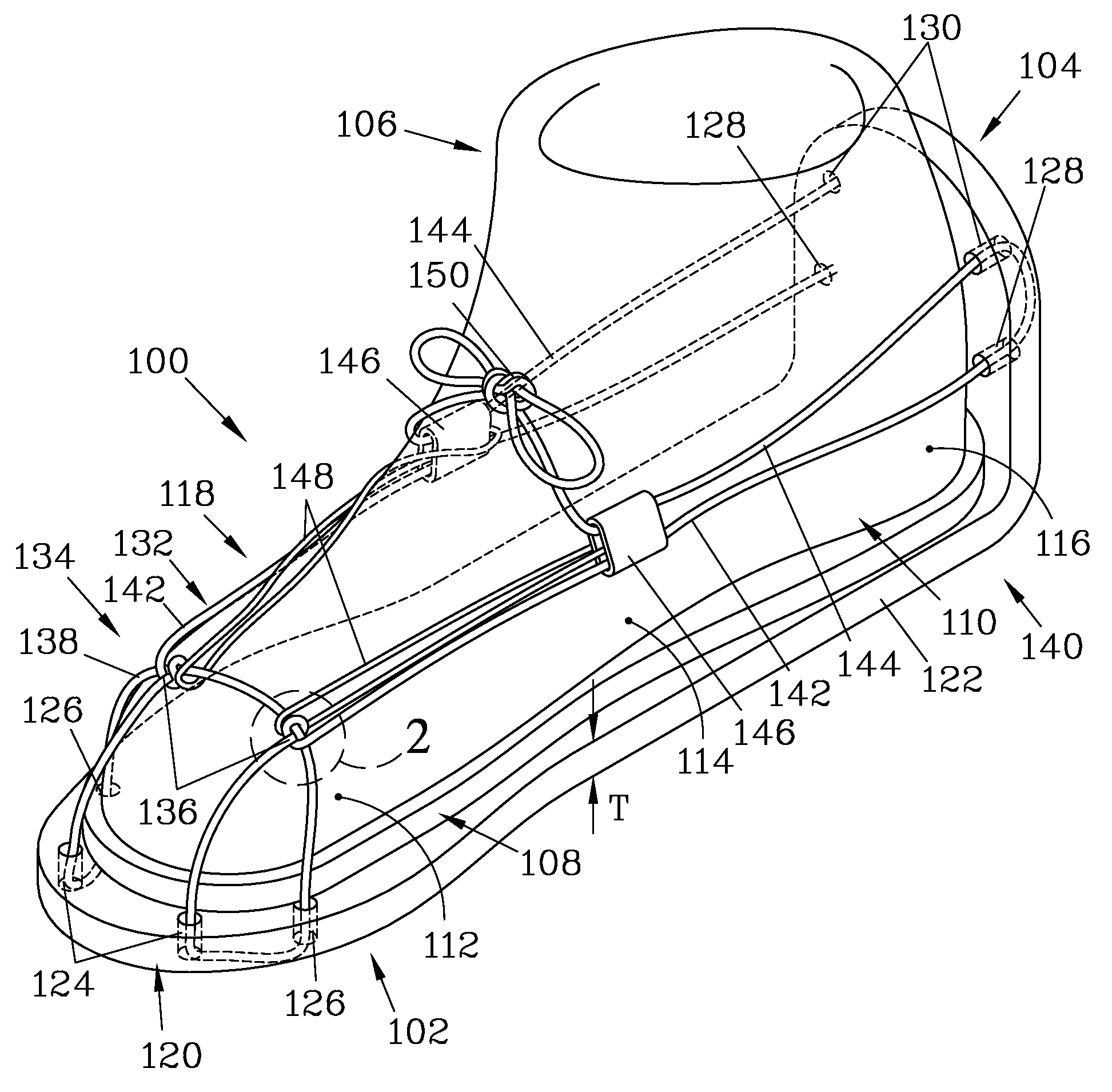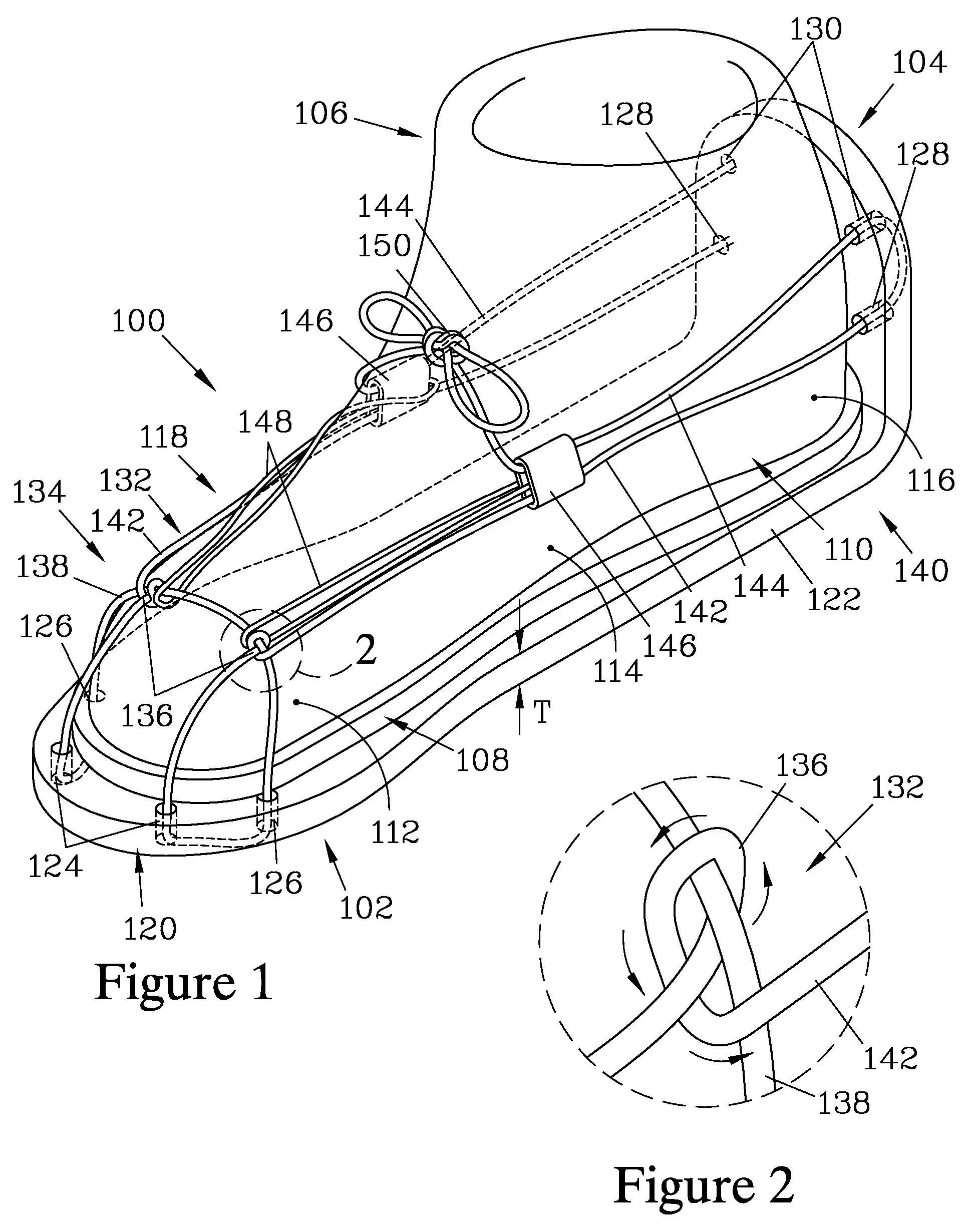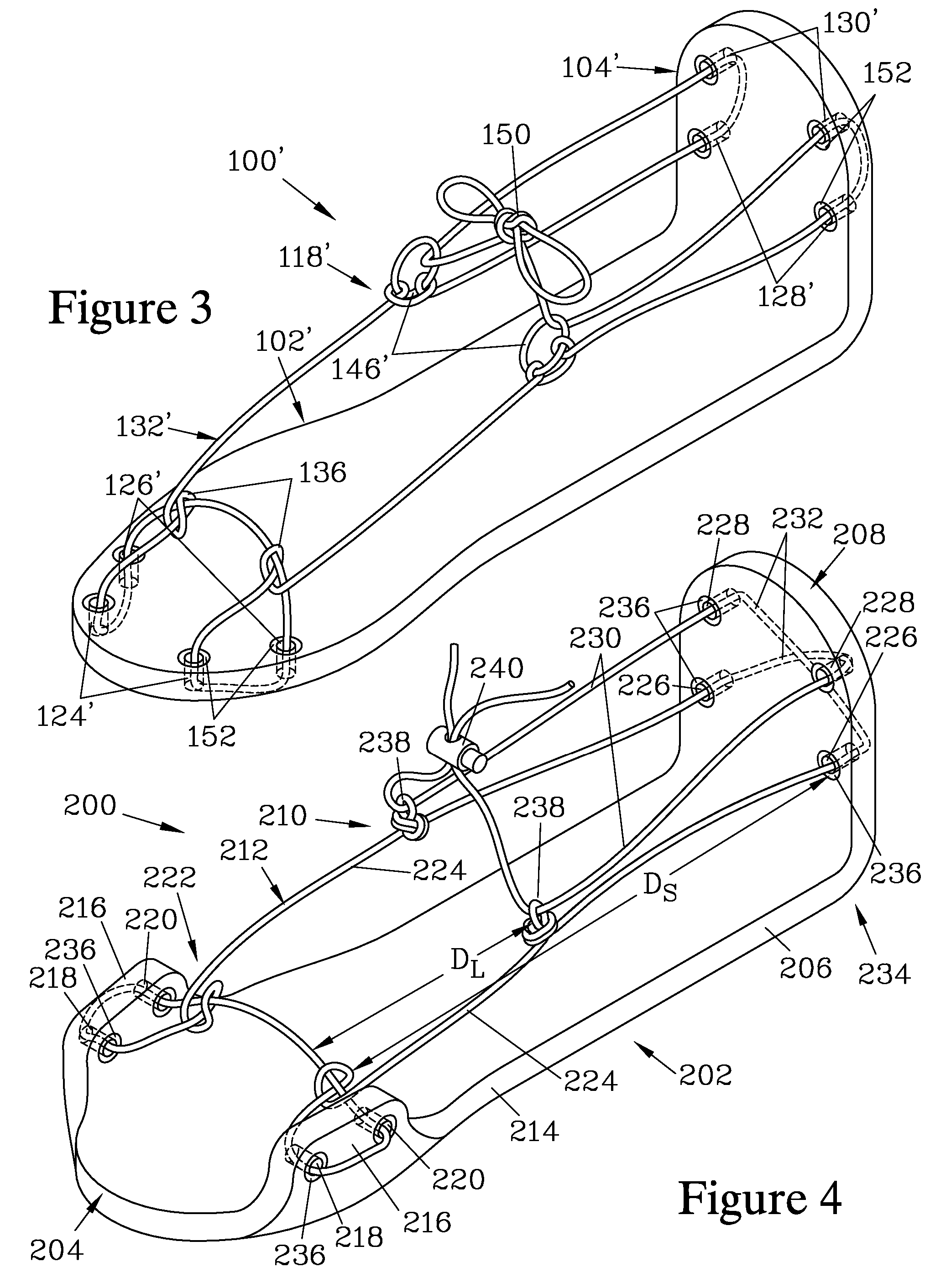Traction device
a technology of traction device and instep, which is applied in the direction of fastenings, uppers, bootlegs, etc., can solve the problems of not being able to provide sufficient stability for extended use on inclined surfaces, devices are not effective on wet rocks, and are often complicated in structure, so as to maintain a downward pressure on the instep region of the boot.
- Summary
- Abstract
- Description
- Claims
- Application Information
AI Technical Summary
Benefits of technology
Problems solved by technology
Method used
Image
Examples
Embodiment Construction
[0022]FIG. 1 is an isometric view of a traction device 100 which forms one embodiment of the present invention. The traction device 100 has a felt platform 102 with a heel extension 104 attached thereto. In this embodiment, the felt platform 102 and the heel extension 104 are formed from a single piece of felt material. The felt material is preferably a polyester woven felt material, such as is commercially available, and has a thickness T that is preferably between about ⅛″ and ½″. The thinner felt materials are felt to be suitable when the traction device 100 is to be used on ski boots, while greater thickness materials are preferred for use with hiking boots in order to provide greater durability and shock absorption. ⅜″ has been found to be a thickness well suited for use with hiking boots.
[0023]The traction device 100 is shown engaged with a boot 106 that has a sole section 108 and an upper section 110. The upper section 110 includes a toe region 112, an instep region 114, and ...
PUM
 Login to View More
Login to View More Abstract
Description
Claims
Application Information
 Login to View More
Login to View More - R&D
- Intellectual Property
- Life Sciences
- Materials
- Tech Scout
- Unparalleled Data Quality
- Higher Quality Content
- 60% Fewer Hallucinations
Browse by: Latest US Patents, China's latest patents, Technical Efficacy Thesaurus, Application Domain, Technology Topic, Popular Technical Reports.
© 2025 PatSnap. All rights reserved.Legal|Privacy policy|Modern Slavery Act Transparency Statement|Sitemap|About US| Contact US: help@patsnap.com



